Vibrating plate from a washing machine motor
 Leveling the ground on a site for a sidewalk or foundation, compacting the soil at the bottom of a ditch or hole - such tasks are often faced by owners of private houses. Of course, you can do the work yourself, but it is much easier to entrust it to technology. A vibrating plate from a washing machine engine can help with this. Let's figure out how to design a vibrating plate. We will tell you what devices and tools may be needed in the process. What is such a homemade product made from?
Leveling the ground on a site for a sidewalk or foundation, compacting the soil at the bottom of a ditch or hole - such tasks are often faced by owners of private houses. Of course, you can do the work yourself, but it is much easier to entrust it to technology. A vibrating plate from a washing machine engine can help with this. Let's figure out how to design a vibrating plate. We will tell you what devices and tools may be needed in the process. What is such a homemade product made from?
Advantages and design of such a vibrating plate
To sometimes work on your personal garden plot, there is no point in purchasing expensive equipment. You will not use such a device very often, but it costs a lot. The best option is to assemble the vibrating plate yourself, using a working electric motor from an old washing machine.
A homemade vibrating plate has several advantages:
- minimum costs for materials and components;
- full compliance with the owner’s requests - you can determine the weight and dimensions of the device yourself;
- simplicity of design;
- homemade reliability.
Of course, there is a drawback. If a ready-made device is simply bought in a store, then you will have to spend several hours of free time on a homemade one. If this is not a problem, then you can get to work.
A homemade vibrating plate consists of the following elements:
- slabs directly. There should be bends on the sides to allow the passage of uneven ground;
- roller with eccentricity;
- motor from a washing machine;
- the frame on which the electric motor will be mounted;
- handles - it will be possible to turn the device in the desired direction;
- wheels - required for transporting the vibrating plate;
- various fasteners.
Most components can be found in the garage or attic. You'll have to buy something. In any case, a homemade vibrating plate will cost less than a store-bought device.
We'll collect everything you need
During the manufacturing process of the device, a lot of tools will be required. Usually every home has them, but you may have to borrow some from your neighbors. You need to prepare:
- grinder;
- welding machine;
- welding electrodes;
- hammer;
- set of wrenches;
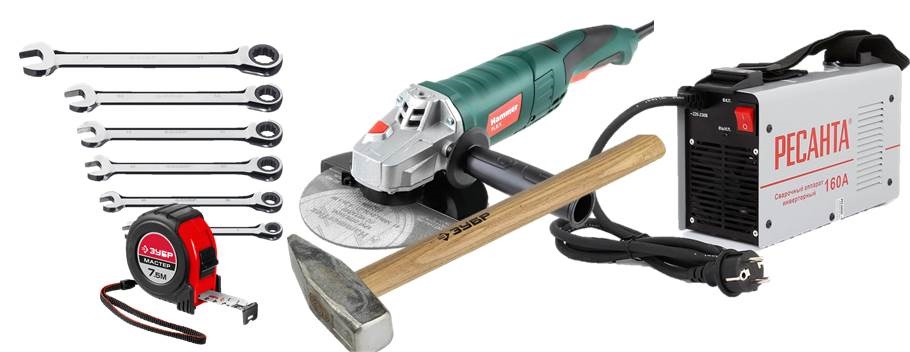
- pencil, ruler, tape measure;
- soldering iron
During the manufacturing process of a vibrating plate, you need to use personal protective equipment: a welding mask and gloves.
The “heart” of a homemade stove will be the motor. This may be the simplest asynchronous motor from a Vyatka-automatic washing machine. If you take a commutator motor, you can regulate the number of revolutions. However, in this case you will have to add a variable resistor to the circuit.
Also during the assembly process you will need:
- wires with plugs;
- mains plug;
- metal plate, approximately 8-10 mm thick. It is better to take a sheet of carbon steel. It is possible to use cast iron, but you need to make sure that there are no defects on it;
- channels and metal corners for assembling the frame;
- handle (it is recommended to take a round pipe with a diameter of about 2-3 cm and a length of 3 meters);
- a set of fasteners (screws, bolts, nuts, etc.);
- vibration damping elements. You can remove parts from an old car - silent blocks, springs, etc. In extreme cases, rubber shock absorbers cut from car tires are suitable.
These are the main “little things” that will come in handy in the process. Having prepared the components, you can begin to work. We'll tell you how a vibrating plate is made.
We construct a vibrating plate
First of all, it is necessary to calculate the future project. Draw a diagram of the vibrating plate, think about the depth to which it should compress the soil. Devices are distinguished:
- lightweight, weighing no more than 75 kg. With their help, you can press the soil to a depth of up to 15 cm. The best option for use in summer cottages and local areas. Suitable for arranging garden paths, sidewalks and other simple work;
- medium, the maximum weight of which is 90 kg, and the compaction depth is up to 25 cm. Suitable for laying asphalt, sidewalks, etc.;
- medium-heavy - weighing from 90 to 140 kilograms. The tamping depth of such devices can reach 160 cm. They are used to strengthen sewer pits and other more ambitious tasks;
- heavy – weighing from 140 kg. These are professional devices used in construction.
Vibrating plates weighing up to 75 kg are optimal for home use.
The electric motor must match the weight of the homemade device. For every 100 kg of vibrating plate mass, a power of 3.7 kW is required.
When a single-phase motor is used, it is necessary to calculate what the transmission mechanism should be. The eccentric rotates at a speed of 180 revolutions per minute, that is, exactly three strokes per second. The frequency of the electric motor can be found on its housing or in the passport. Let's say it's 1000 rpm.
Then the gear ratio will be 1000/180=5.5. Based on this, it is concluded that the eccentric pulley should be five and a half times larger than the pulley on the engine.After completing the calculations, you can begin installation. While working, it is important not to forget about safety rules.
First of all, the working part is assembled. The algorithm of actions will be as follows:
- cut a rectangle of the required size from a sheet of metal (for example, 720x400 mm), sharp edges must be rounded;

- bend the front edge of the workpiece by 10 cm, the back edge by 7 cm. To do this, cut small cuts in the bend areas with a grinder;
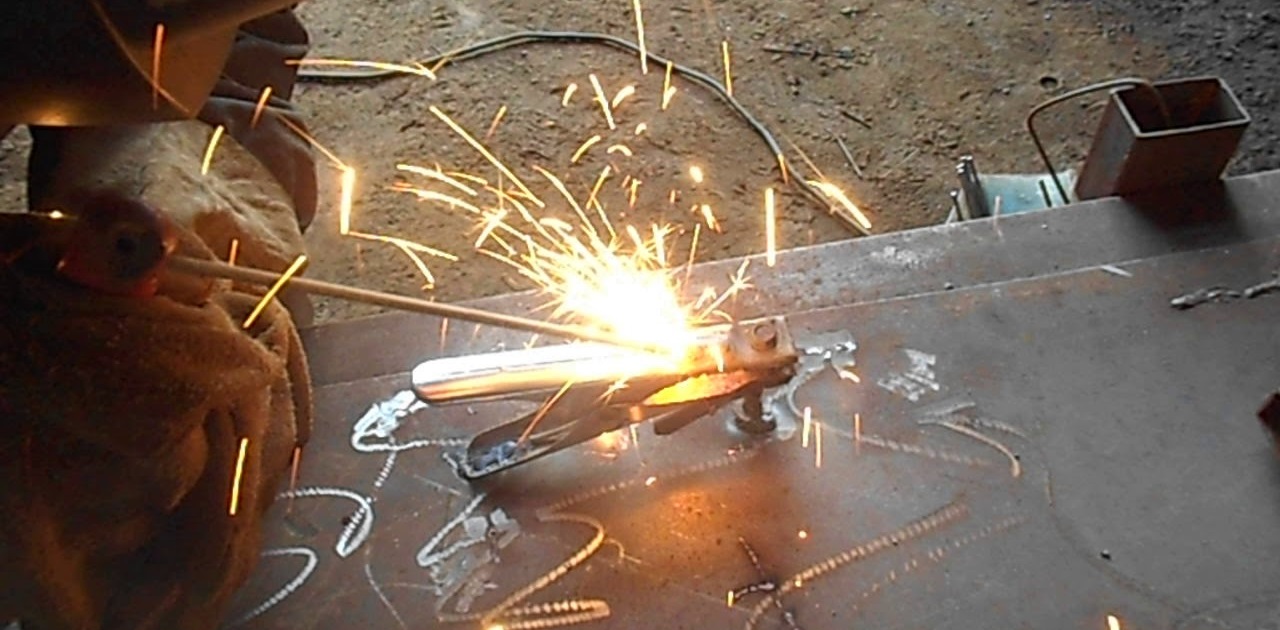
- after the edges are bent, weld the cut;
- if necessary, reinforce the bend with gussets.
Thus, the working part is prepared. Next, do the following:
- secure the motor to the frame via rubber shock absorbers;
- make a vibrator (this will be a shaft placed with eccentricity, that is, a slight inclination);
- attach a heavy metal plate to the vibrator (for imbalance);
- install plain bearings (this type will be best for working in vibration conditions);
- place the shaft and connect it to the electric motor (via a V-belt drive);
- treat all moving elements with special lubricant;
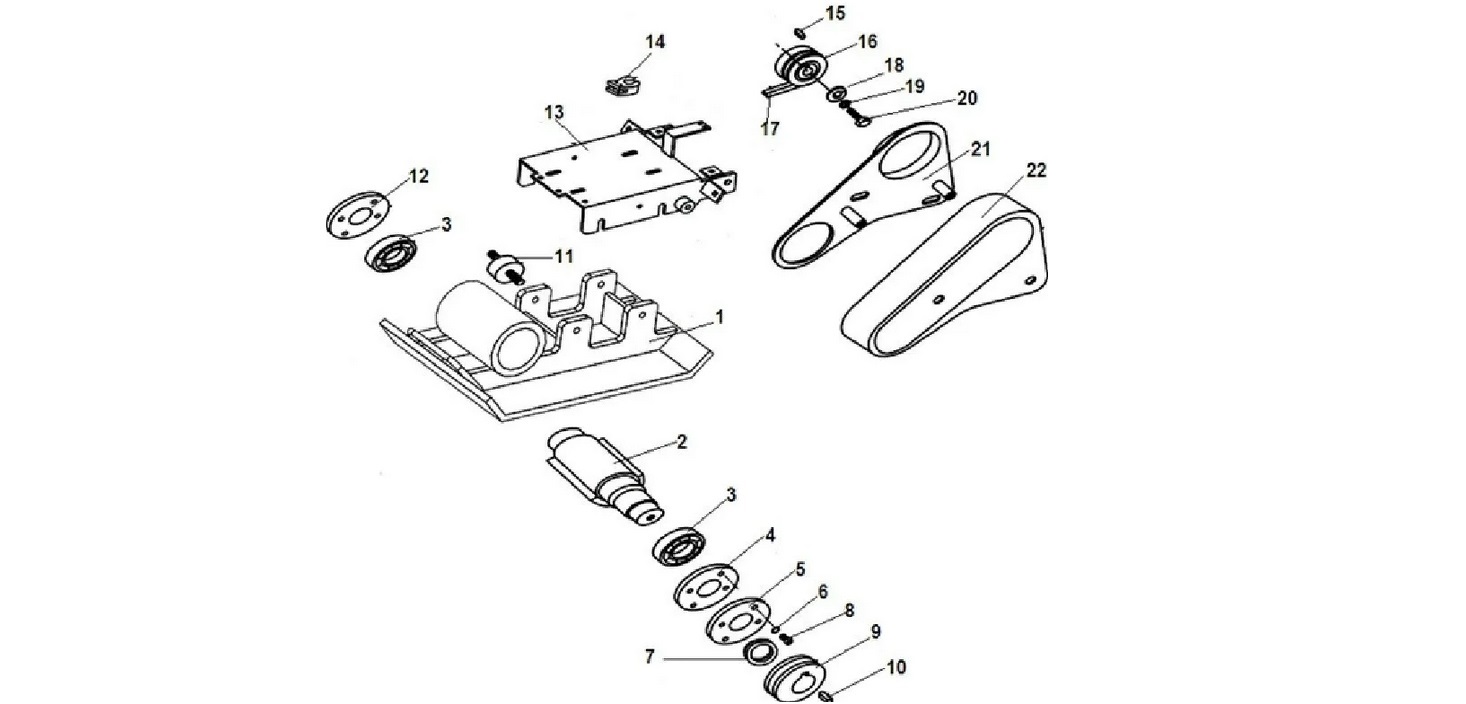
- hide the drive mechanism under the protective cover;
- assemble and secure the handle. It should be fixed hingedly so that vibration impulses are not transmitted to the user’s hands;
- prime the structure and paint. The slab itself does not need to be treated - it will wear off very quickly from constant contact with the ground.
During the installation process, keep in mind that the shaft pulley and the motor must be located on the same straight line.
This is exactly how you assemble a vibrating plate with your own hands.Of course, this is not a quick process, but in just a few hours you can get a working device that is in no way inferior in functionality to a shop machine. The savings will be significant.
Safety precautions when working with a vibrating plate
When working with any electrical appliances, safety precautions must be observed. A vibrating plate, if handled incorrectly, is quite capable of causing harm to human health. Therefore, before using a homemade product for the first time, be sure to:
- check all fasteners - they must be securely tightened;
- treat all moving structural elements with special lubricant or grease;
- Use a multimeter to measure the insulation resistance of the electric motor. The indicator should tend to infinity.
It is advisable to carry out such checks before each use of the vibrating plate. The lubricant must be renewed - over time it loses its properties.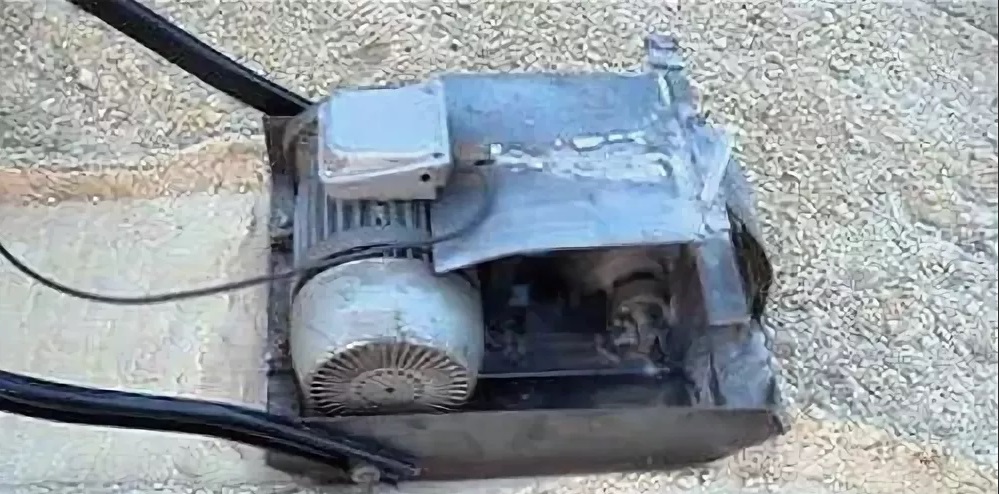
When operating the vibrating plate, follow the following recommendations:
- do not use the device on asphalt or concrete - the machine is not designed to work on hard surfaces;
- connect the device to the network through a residual current device. In this case, if the engine overheats, the vibrating plate will automatically turn off;
- Before cultivating the soil, water the desired area of land with water. Wet soil is easier to press;
- The homemade device must be stored in a dry place.
During operation, the vibrating plate moves on its own. The user will need to use the handle to direct it in the desired direction. In order not to constantly turn the device around, you can make the motor reversible by providing a toggle switch in the circuit.
Interesting:
Reader comments
- Share your opinion - leave a comment
Categories
Washing machine repair


For buyers

For users

Dishwasher


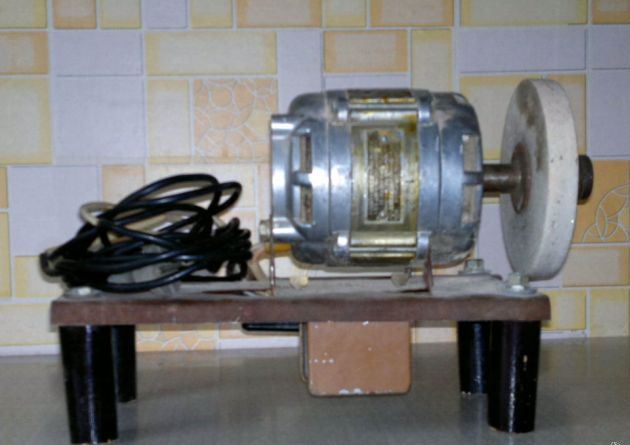

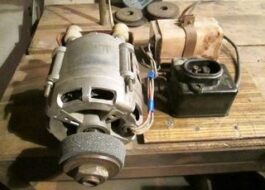
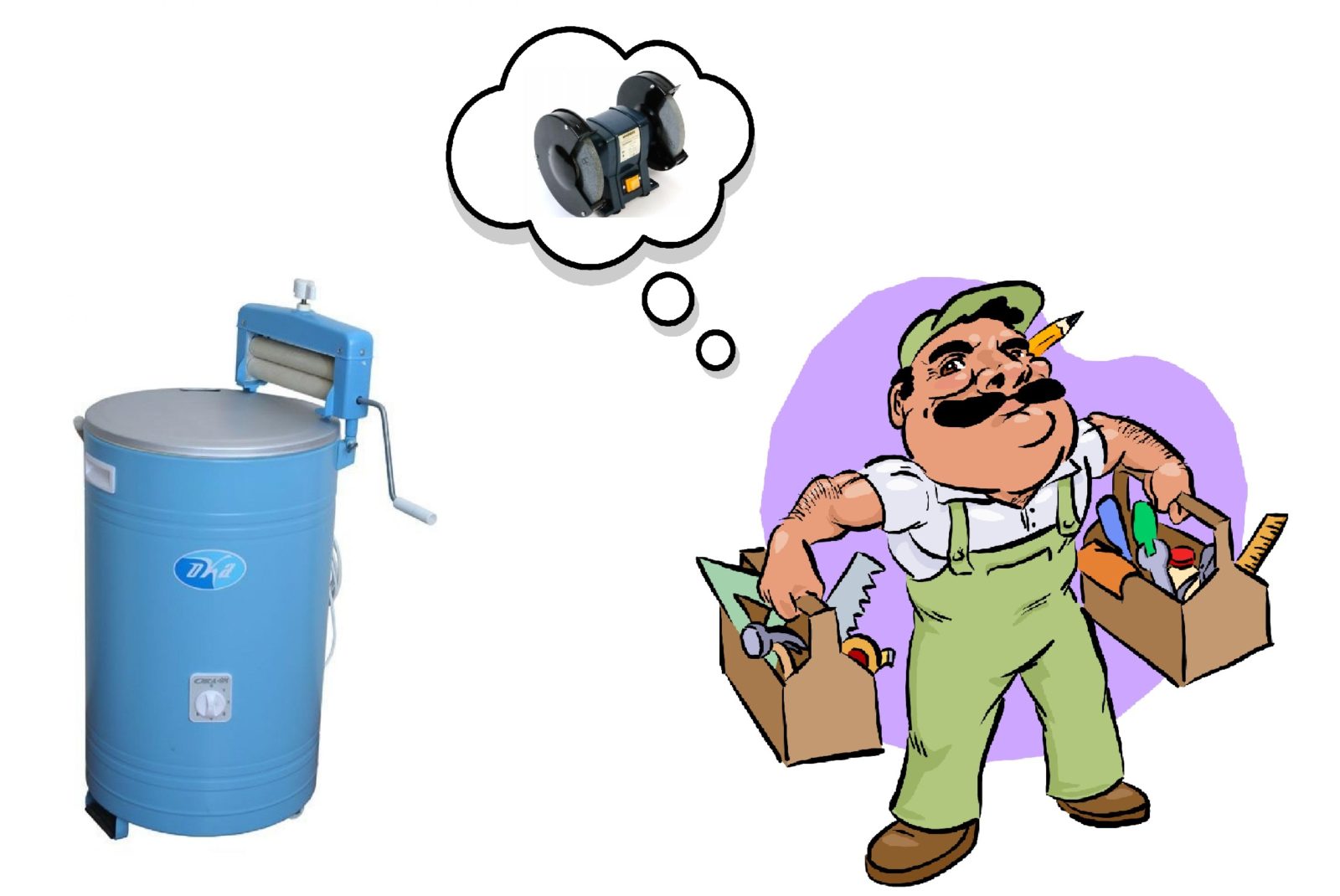











Add a comment